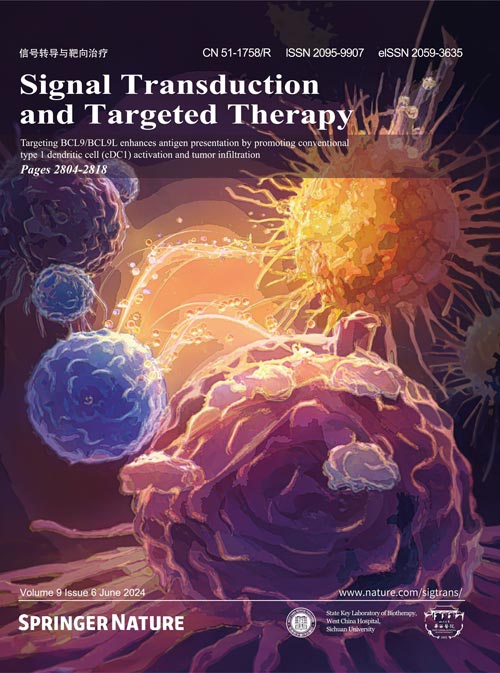Volume 9 Issue 6, Jun 2024:
Article
Structural basis of negative regulation of CRISPR-Cas7-11 by TPR-CHAT
Tian Hong,Qinghua Luo,Haiyun Ma,Xin Wang,Xinqiong Li,Chongrong Shen,Jie Pang,Yan Wang,Yuejia Chen,Changbin Zhang,Zhaoming Su
ORCID: orcid.org/0000-0002-9279-1721,Haohao Dong
ORCID: orcid.org/0000-0002-5022-3494 &…Xiaodi Tang
ORCID: orcid.org/0000-0001-7452-5211
CRISPR‒Cas7-11 is a Type III-E CRISPR-associated nuclease that functions as a potent RNA editing tool. Tetratrico-peptide repeat fused with Cas/HEF1-associated signal transducer (TPR-CHAT) acts as a regulatory protein that interacts with CRISPR RNA (crRNA)-bound Cas7-11 to form a CRISPR-guided caspase complex (Craspase). However, the precise modulation of Cas7-11’s nuclease activity by TPR-CHAT to enhance its utility requires further study. Here, we report cryo-electron microscopy (cryo-EM) structures of Desulfonema ishimotonii (Di) Cas7-11-crRNA, complexed with or without the full length or the N-terminus of TPR-CHAT. These structures unveil the molecular features of the Craspase complex. Structural analysis, combined with in vitro nuclease assay and electrophoretic mobility shift assay, reveals that DiTPR-CHAT negatively regulates the activity of DiCas7-11 by preventing target RNA from binding through the N-terminal 65 amino acids of DiTPR-CHAT (DiTPR-CHATNTD). Our work demonstrates that DiTPR-CHATNTD can function as a small unit of DiCas7-11 regulator, potentially enabling safe applications to prevent overcutting and off-target effects of the CRISPR‒Cas7-11 system.
